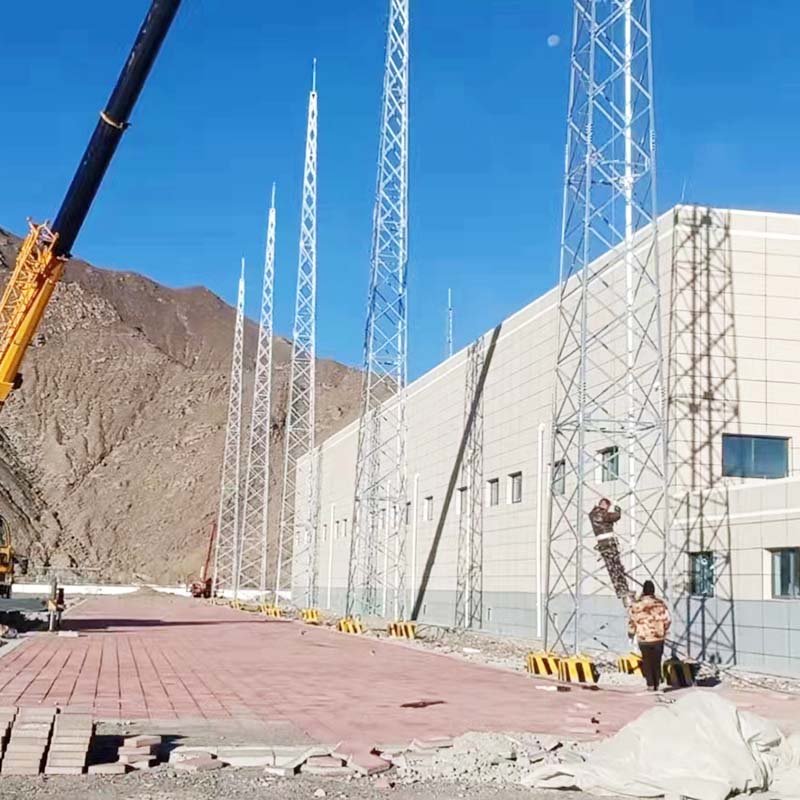Considerations When Implementing Lightning Protection Towers
2024-06-04
Lightning protection towers, also known as lightning masts or lightning protection systems, are structures designed to protect buildings, structures, and areas from lightning strikes by intercepting the strikes and safely dissipating the electrical energy into the ground. Here are some key features and considerations regarding lightning protection towers:
Key Features of Lightning Protection Towers:
1. Height:
- Lightning protection towers are typically tall structures that are designed to extend above the buildings or areas they protect. The height is crucial to ensure that the tower is the highest point, making it more likely to be struck by lightning.
2. Material:
- Towers are usually made from conductive materials such as steel or aluminum, which can efficiently carry the electrical charge from a lightning strike to the ground.
3. Grounding System:
- A crucial component of a lightning protection tower is its grounding system, which safely dissipates the electrical charge into the earth. The grounding system typically includes grounding rods or plates buried in the ground and connected to the tower by conductive cables.
4. Air Terminals (Lightning Rods):
- These are the pointed rods or spikes at the top of the tower that attract the lightning strike. They are made from conductive materials and are strategically placed to cover a wide area.
5. Down Conductors:
- These conductors run from the air terminals to the grounding system. They must be robust enough to handle the immense electrical energy of a lightning strike without melting or breaking.
Considerations When Implementing Lightning Protection Towers:
1. Placement:
- The location of the lightning protection tower is critical. It should be placed where it can effectively cover the area or structure it is meant to protect. This involves calculations based on the height of the tower and the area of influence.
2. Design and Standards:
- The design of the lightning protection system should comply with national and international standards (e.g., NFPA 780, IEC 62305). These standards provide guidelines on the height, materials, and installation practices.
3. Maintenance:
- Regular inspections and maintenance are necessary to ensure the integrity of the lightning protection system. This includes checking for corrosion, loose connections, and ensuring the grounding system is effective.
4. Environmental Considerations:
- The tower should be designed to withstand environmental conditions such as high winds, heavy rain, and other local weather patterns. Materials used should be resistant to corrosion and wear.
Applications of Lightning Protection Towers:
- Buildings and Infrastructure: Protecting tall structures, communication towers, and critical infrastructure from lightning damage.
- Open Areas: Providing protection in large open spaces like sports fields, parks, and industrial complexes.
- Sensitive Facilities: Safeguarding facilities with sensitive equipment, such as power plants, chemical plants, and data centers.
Benefits of Lightning Protection Towers:
- Safety: Protects human lives and reduces the risk of fire or explosion due to lightning strikes.
- Equipment Protection: Prevents damage to electrical and electronic equipment, reducing downtime and repair costs.
- Structural Integrity: Maintains the structural integrity of buildings and infrastructure by preventing lightning-induced damage.
Installation and Professional Services:
- It is recommended to engage professional services for the design and installation of lightning protection systems. Professionals can conduct a risk assessment, design an appropriate system, and ensure compliance with relevant standards.
By intercepting lightning strikes and safely directing the electrical energy to the ground, lightning protection towers play a crucial role in safeguarding buildings, infrastructure, and open spaces from the destructive forces of lightning.



